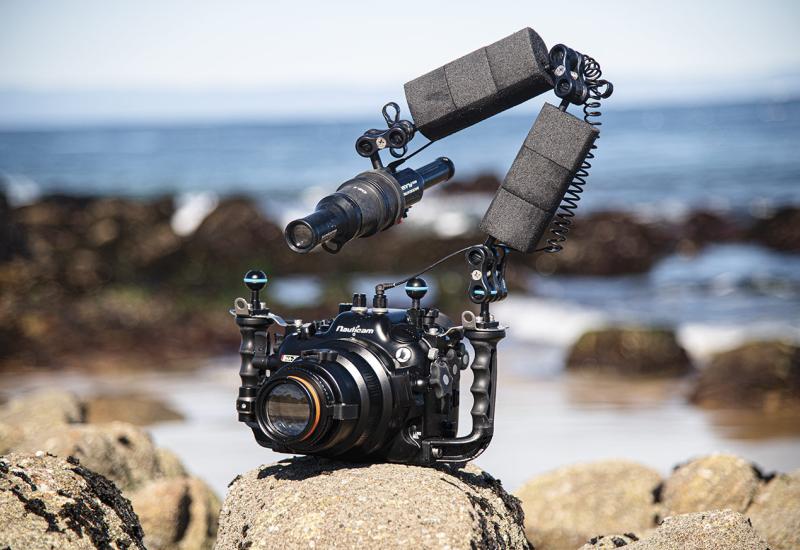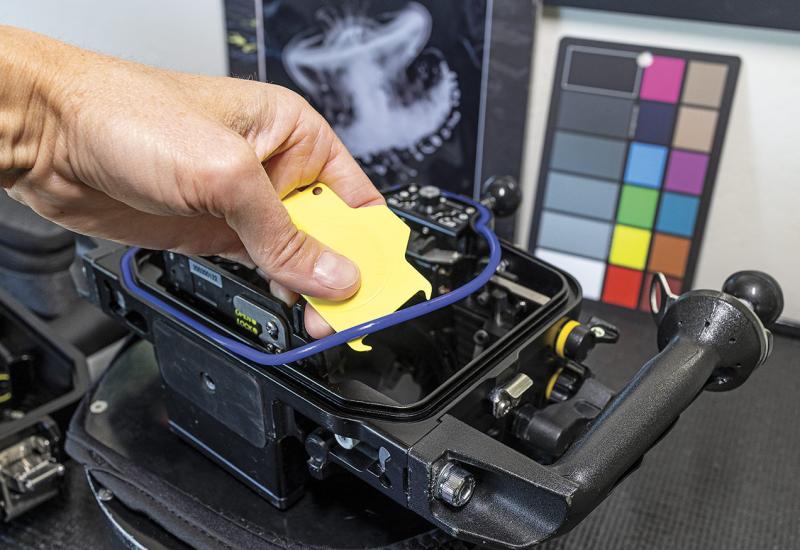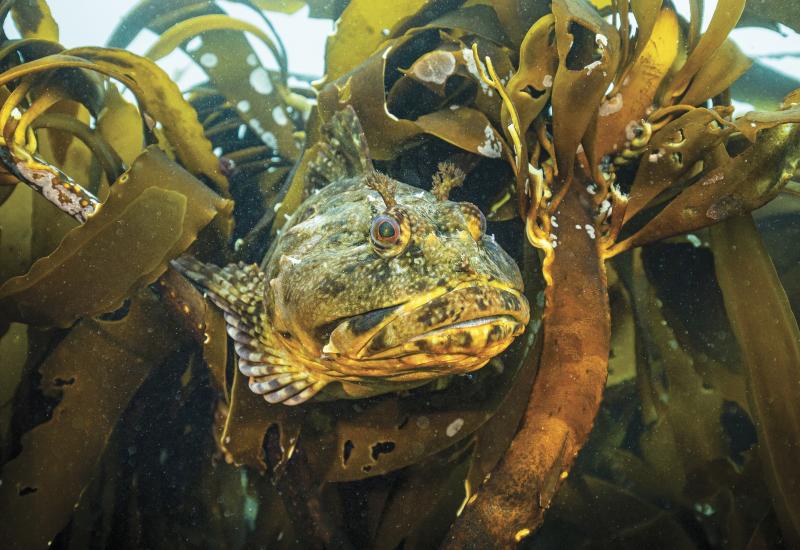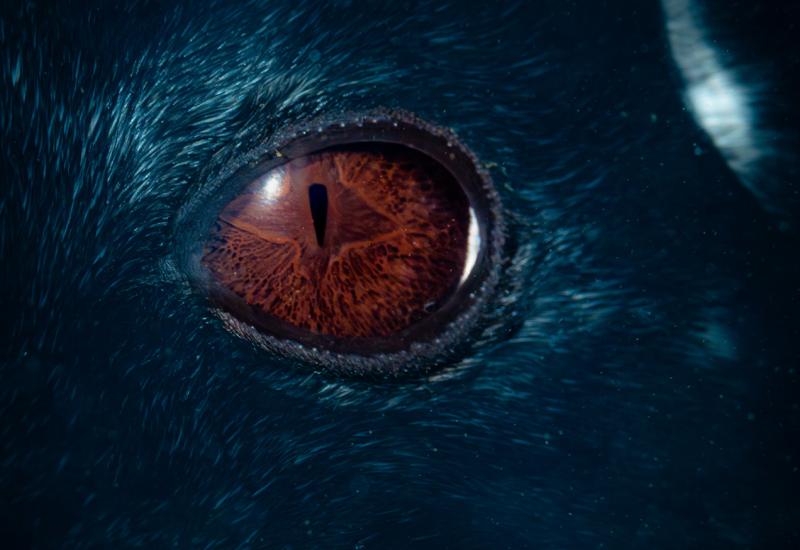Photographing Blennies With Personality
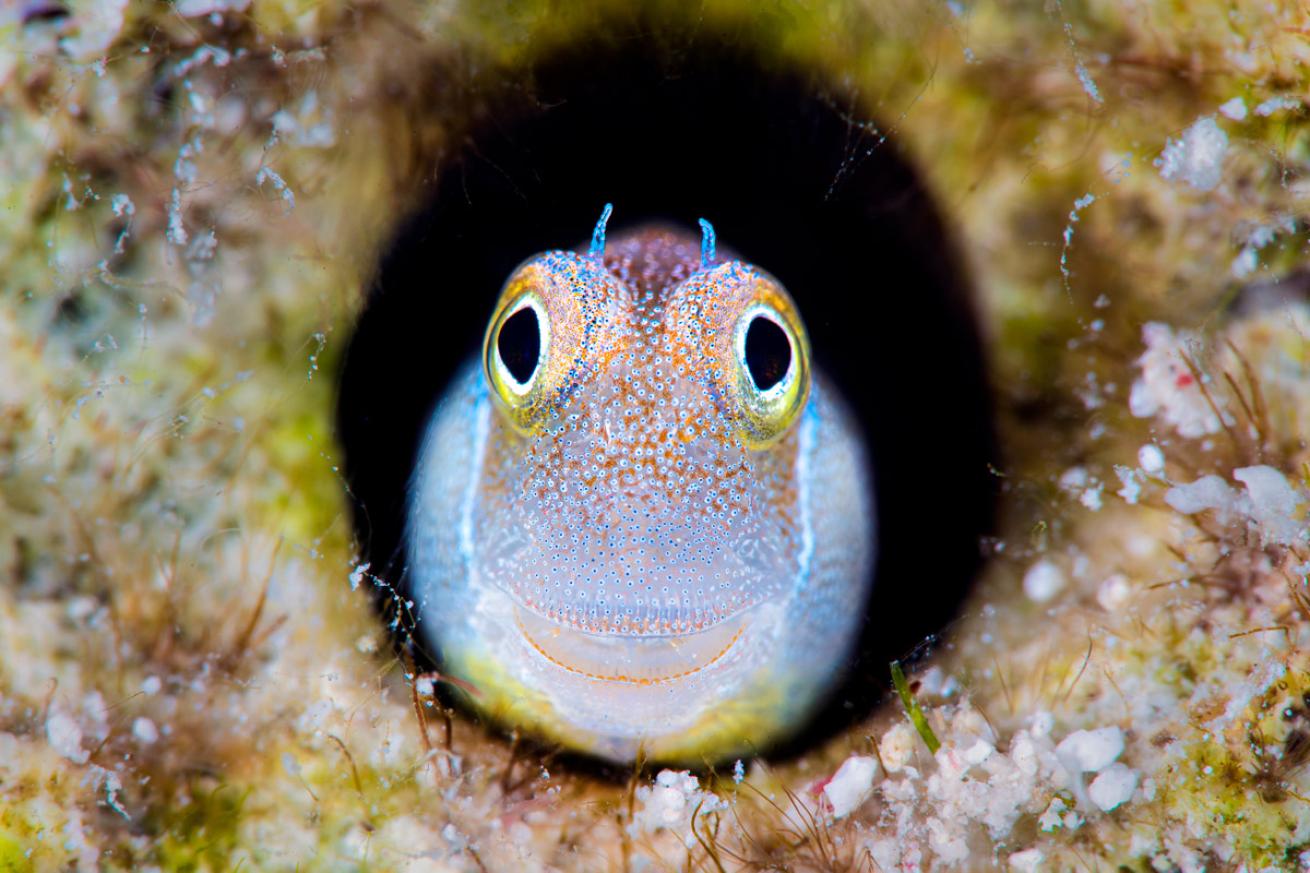
Alex MustardGear Nikon D5 with 105mm lens and Nauticam SMC
Settings f/40; 1/250; ISO 100
The biggest challenge with photographing fish is creating pictures that the average Joe wants to look at. Most people aren’t that interested in plain old fish, and that puts pressure on us, as photographers, to create images that will draw them in. The easiest way to make fish more appealing is to find angles that emphasize their personality. People may not be fascinated with fish, but they will always engage with character.
Often in life, the biggest characters come in the smallest packages. This is definitely true of blennies. Their large eyes, elaborate cirri on their heads, and goofy mouths create faces that you can easily project emotion onto. They are also active fish, which will enliven your pictures. Fortunately, blennies are widespread around the world. Photographer-favorite species include fang blennies, sailfin and signal blennies, pike blennies, arrow blennies and the wonderfully named sarcastic fringeheads.
Related Reading: Expert Alex Mustard Shares His Secrets on How to Photograph Dolphins in the Wild
Capturing character starts with eye contact, which you can maximize by getting the camera down to the eye level of the subject. Getting low doesn’t just improve the connection with the subject, it simultaneously improves the background of the photo. Unlike many fishes that have eyes on the sides of their heads, blennies often have forward-facing eyes that make them ideal for portraits. While double-eye shots are highly desirable, remember that eye contact is more important. If you have to ask if a photo has eye contact, it doesn’t! If you can’t get two eyes connecting with the camera, try to frame more from the side. One good eye is much better than two bad eyes. But if you can get two eyes facing forward, frame from dead ahead, as this arranges the fish’s features in the same structure as a human face, helping the viewer project emotion and character onto the subject.
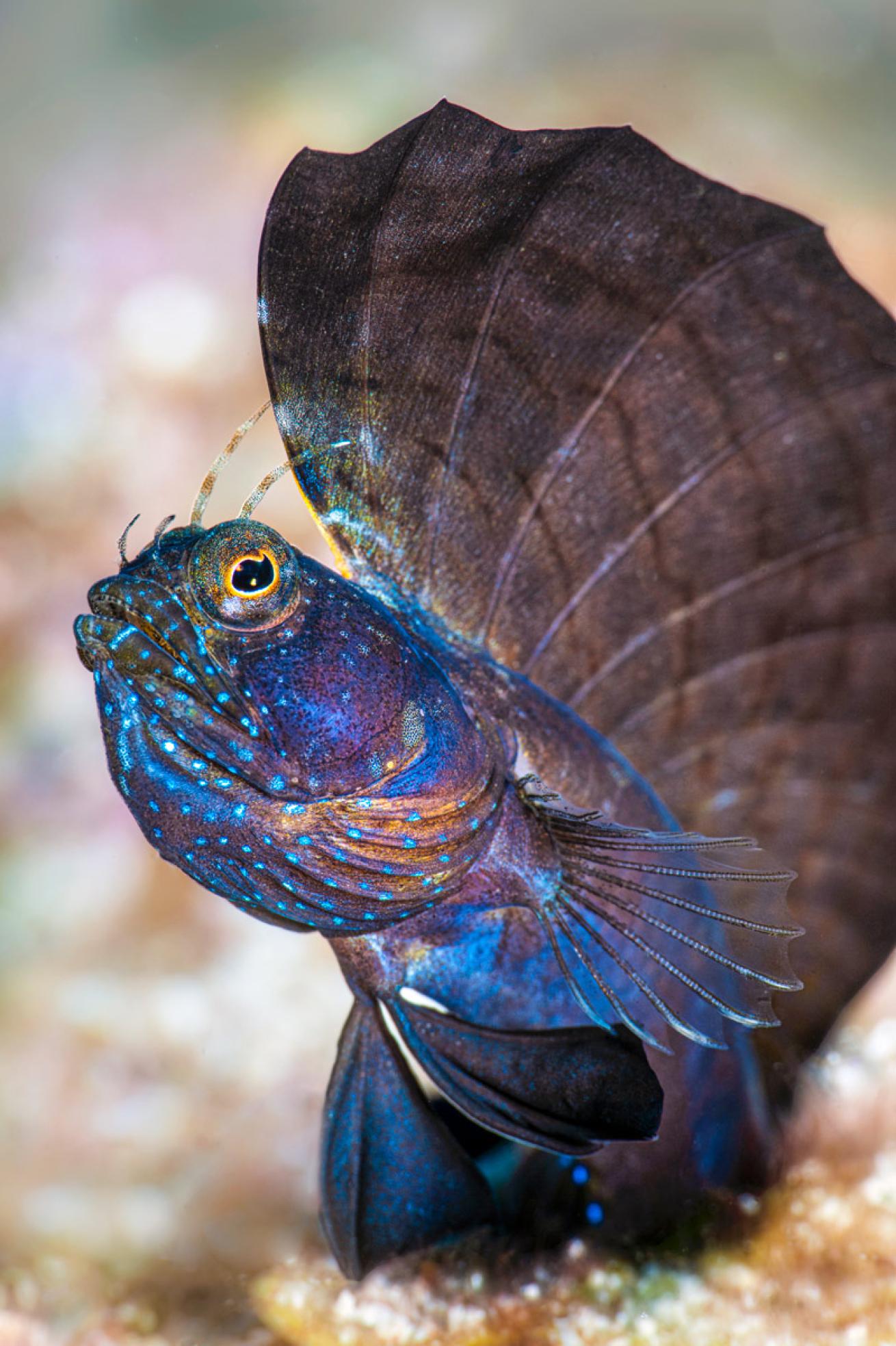
Alex MustardGear Nikon D700 with 150mm lens
Settings f/13; 1/100; ISO 200
Annoyingly for photography, blennies move their eyes independently, which means even when you have them perfectly framed, you can end up with pictures where neither eye connects. Once I am in position, I sometimes waggle my finger on the shutter release or tap the housing with my fingernail to catch their attention. Many photographers try this trick and find it doesn’t work because they try it too soon, too often or move their fingers too much. Don’t try the trick until you have been totally stationary in front of the subject for a couple of minutes, and then just make one tiny movement with your finger to pique their curiosity. If you are constantly jiggling, you won’t catch the eye.
On most blennies, the eyes are set back slightly behind the mouth, and most standard autofocus systems will lock onto the closest part of the subject, which can leave the eyes slightly out of focus. This can be hard to spot when reviewing underwater. When shooting these types of images, I will switch my focus mode to a single point and then move it over the closest of the two eyes. Alternatively, I will switch to back-button focus, focus on the front of the blenny, and then rock the camera slightly closer until the eyes are pin sharp.
Behind The Shot
1 Blennies come in a range of sizes. Some, like this blue-bellied blenny from the Red Sea, are much smaller than most people think. This is very much a super-macro subject, hard to find but reasonably easy to shoot because it stays still in its hole. This individual lived in just 6 feet of water, so I had lots of time to move the camera up and down until I got the perfect facial expression. Super-macro is usually easiest using back-button focus and then making minute movements of the camera to perfect focus and composition. My goal was to capture this character framed against the dark circle of his home.
2 Sailfin blennies are a spectacular species, with an oversize dorsal fin used for display. This species typically flashes its fin up and down, and I would love to reveal a secret tip to make it stop and pose, but I don’t know one. I just shoot enough pictures to get a good one. I have tried—without success—using a small mirror to encourage a territorial display. The only tip I have is to go in the water in the late afternoon, when it is more common to find them displaying. I also favor a longer focal length macro lens, which allows me to keep some distance and not disrupt the behavior.
Related Reading: Winged Wonders: Making the Most of Magical Manta Encounters
Where To See Them
Blennies are widespread in the oceans, but I always look forward to my trips to the Caribbean to capture the tiny reef tube blennies: spinyhead, roughhead and secretary blennies. The enduring popular Cayman Islands make an ideal location for all three species. Spinyheads are the most characterful and are common on both wall and reef sites. Roughheads are more sporadic, but can be locally abundant, including the golden color variety, highly sought by photographers. Secretary blennies tend to live in shallow areas on the hardpan and are most easily found on shore dives. Cayman is easy to reach and has a host of professional operators. Lots of dive staff obsess about the small stuff and will be only too happy to spot them for you.

